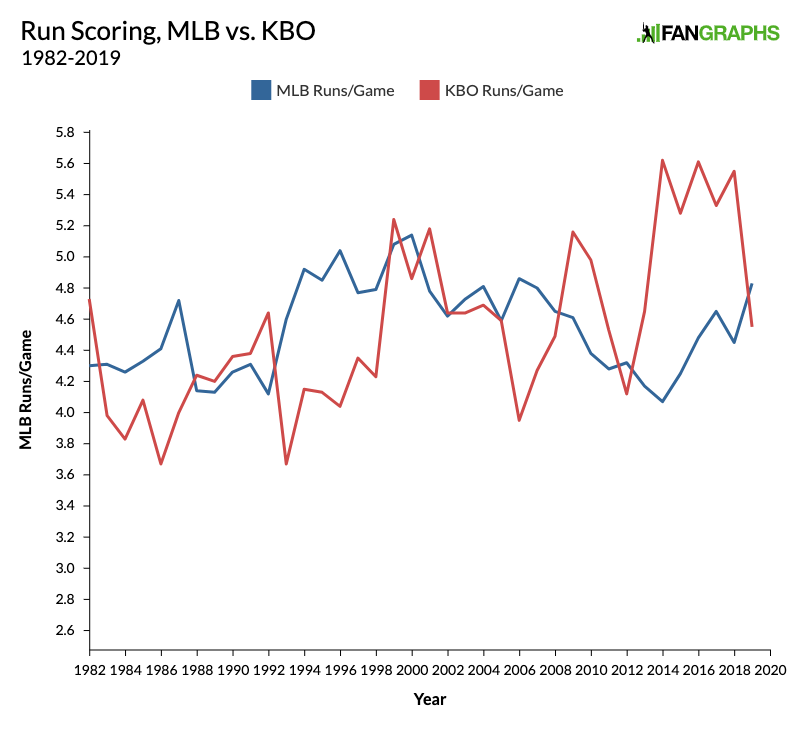Chang-mo Koo Is Always Ahead
Modern baseball writers are a somewhat spoiled bunch. If you’re writing a story about an MLB player, you have seemingly countless resources at your disposal to gather more statistics than you might know what to do with. For example, say that I wanted to write about Cleveland Indians starting pitcher Shane Bieber. His player page on this site lists any standard or advanced metric I could want, along with info on things like how hard he throws his fastball and how often opponents chase his pitches out of the zone. If I see he struck out 259 batters in 2019, and want to know how many other pitchers in the live ball era struck out at least 250 batters in just their second big league season, I can use Baseball-Reference’s Play Index to find the answer. If I want to get more specific, and learn how many times Bieber struck out a right-handed hitter with a breaking ball out of the zone, Baseball Savant’s search feature has me covered there too.
When it comes to writing about foreign professional leagues, however, the wealth of information isn’t quite so grand for the American writer. Sites like MyKBO.net and Statiz are great resources, and our KBO leaderboards tell us a lot of great stuff — like the fact that NC Dinos left-hander Chang-mo Koo 구창모 leads all pitchers in both ERA and FIP after four starts – but if you want to dig into why or how he’s doing that, we don’t have the pitch-by-pitch data to identify things like velocity, spin rate, or how batters are performing against individual offerings. That hasn’t diminished my curiosity about Koo, though, so I used the tools available to me — Twitch and ESPN archives of game broadcasts, a notepad, and my own two eyes — to track his pitches over his first four starts, in the hope that doing so would reveal something interesting. Fortunately, both for myself and my editor who enjoys for me to have story ideas, it did. Read the rest of this entry »

